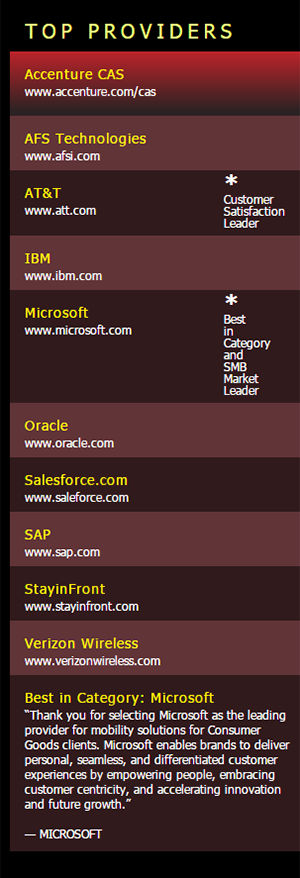2016 Readers' Choice Survey: Mobility

By: Michael Forhez – Global Vice President, Consumer Markets, 1WorldSync
According to Peter Drucker, “Business has only two functions — marketing and innovation.” But with the pace of innovation and technology quickening we might want to think on using a new portmanteau; TECHNOVATION.
Technovation suggests that marketers must recognize the accelerating pace of evolving technology, now inextricably linked to adapting consumers, while adjusting our comprehension and organizational structures to embrace not just the obvious, e.g., big data and analytics, but also how consumers, themselves, view their online and offline lives as part of a seamless whole. Marketers must understand that technovation is not only about understanding what consumers are doing with technology, but also what technology is doing to them.
Mary Meeker of KPCB notes that since 2008, the time an adult spends on digital media has gone from 2.7 to 5.6 hours per day, and that mobile has increased from 12 percent of that time spent to 51 percent. In June 2015, Pew Research noted that a fifth of Americans are ‘almost constantly’ online, with 36 percent of 18 to 29 year olds reporting they are ‘almost constantly’ online. Nielsen recently reported, in the desirable 18 to 34 year old demographic, that 8.5 million people per minute now use smartphones and other TV connected devices, surpassing 8.1 million per minute that use traditional TV screens.
In his book “Decoding the New Consumer Mind: How and Why We Shop and Buy” Kit Yarrow opines, “our use of technology has changed our psychology” including for innovation optimism, consumer empowerment, faster thinking, symbol power, and new ways of connecting.
The Ericson Institute, in a just released study representing 1.1 billion people across 24 countries found that constantly having a screen in the palm of your hand is not always a practical solution, however. Prognosticators now believe this technology will be a thing of the past, perhaps in fewer than five years.
What might make this forecast a reality? The Internet-of-Things has already taken hold, and Virtual Reality now has a purchase on popular imagination. Watch for a plethora of new form factors, from flexible screens, to wearables, to implantables. The computing power driving this technology is readily available and rapidly evolving. IBM has Watson, and Google claims its “D-Wave Quantum Computer” will be 100 million times faster than any of today’s machines. If true, D-Wave could theoretically solve a mathematical problem within seconds that would take today’s digital computer 10,000 years to calculate.
This kind of computing power, linked to Artificial Intelligence, coupled with new user form factors, will drive innovation for the next era of digital communication making possible – quite literally – commerce-at-the-speed-of-thought.
A brave new world is upon us, taking shape around us and with all of us as participants and innovators in our own right.
Hail the consumer!

